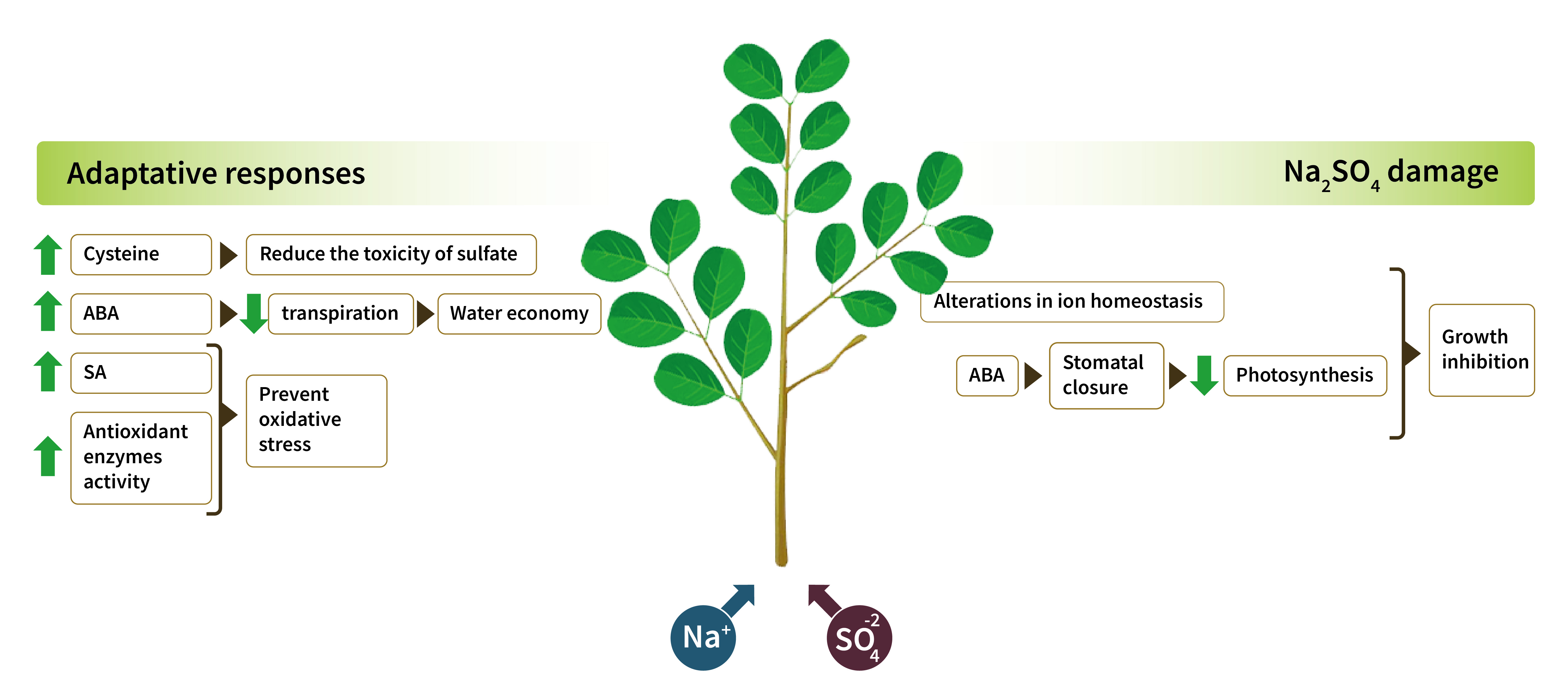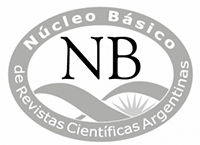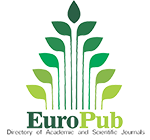Physiological and biochemical responses of Neltuma ruscifolia under Na2SO4 stress
Palabras clave:
homeostasis iónica, fitohormonas, enzimas antioxidantes, fotosíntesis, estrés salinoResumen

Salt stress limits plant production in arid and semi-arid zones. Although Na2SO4 is frequent in saline soils, most studies on plant physiological responses to salt stress were conducted using NaCl. This study aimed to determine the effect of Na2SO4 salt stress on physiological and biochemical responses in Neltuma ruscifolia. Increasing concentrations of Na2SO4 were added to 6-month-old plants grown hydroponically in 25% Hoagland nutrient solution. After 60 days of saline treatments, biomass, cysteine concentration, gas exchange, mineral composition, abscisic acid and salicylic acid concentrations, and antioxidant enzyme activity were determined. It is concluded that 200 mmol L-1 Na2SO4 is the threshold for N. ruscifolia seedling growth. Growth inhibition can be attributed to altered ionic homeostasis and photosynthesis inhibition after stomatal closure. Nevertheless, the species shows adaptive responses to this salt. Stomatal closure and increased foliar concentrations of abscisic acid contribute to water economy, while cysteine synthesis reduces sulfate toxicity. In parallel, salt stress induces salicylic acidaccumulation in leaves, increasing the activity of antioxidant enzymes that prevent oxidative stress.
Highlights:
- The threshold for growth of Neltuma ruscifoliais 200 mmol L-1 Na2SO4.
- Salt stress altered ionic homeostasis.
- Sodium sulfate inhibited photosynthesis due to stomatal closure.
- Salt stress increased concentrations of abscisic acid and salicylic acid.
- Salt stress triggers the species' antioxidant response.
Descargas

Descargas
Publicado
Cómo citar
Número
Sección
Licencia
Derechos de autor 2018 Revista de la Facultad de Ciencias Agrarias UNCuyo

Esta obra está bajo una licencia internacional Creative Commons Reconocimiento-NoComercial-CompartirIgual 3.0.
Aquellos autores/as que tengan publicaciones con esta revista, aceptan las Políticas Editoriales.










.jpg)




